|

"Swiss Quality Supplier "
for GUARANTEED
Highest Quality Manufacturing of Edge Welded Metal Bellows
* Customer Specific
Solutions to Industry Standard Sizes
* Full Design Engineering
Support
* Prototypes and Custom Bellows
* Edge Welded Bellows with
High Axial and Lateral Flexibility
* Manufacturing of Complete Diaphragm Bellows Including End
Pieces for Vacuum/High Vacuum Applications
* In-House Testing for Design Validation and Q.A.
*100% Parts Leak Test Certified to 1x10-9 cc (STP)/second (helium)
Contact: i.miller@mewasa.ch Tel: 520-797-6980
|
|
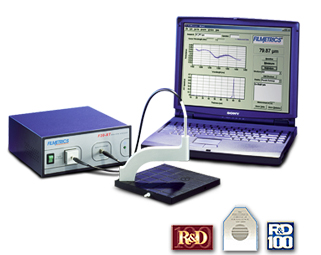
Filmetrics Thin-Film Thickness Measurement Systems
-Measure thickness from 1nm to 1mm
-Measure refractive index and other properties
-Used in thousands of applications worldwide
We offer the industry's only complete line of thin-film
measurement instruments. With our 24-hour online
"Hands On" support, expert help is only a minute away.
Contact:
www.filmetrics.com
858-573-9300 |
|
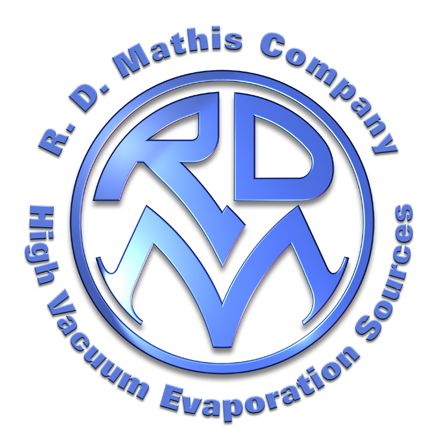
The R.D.
Mathis Company
specializes in the fabrication of high vacuum evaporation sources for thin film
coating industries. We offer a comprehensive selection of tungsten, molybdenum
and tantalum sources through our catalog and offer custom fabrication to meet
your specific coating needs. Our "LV Series" Low Voltage, High
Current Power Supplies and "GP 100" Inert Gas Purifier compliment
your evaporation process. Contact: www.rdmathis.com 562-426-7049
|
|
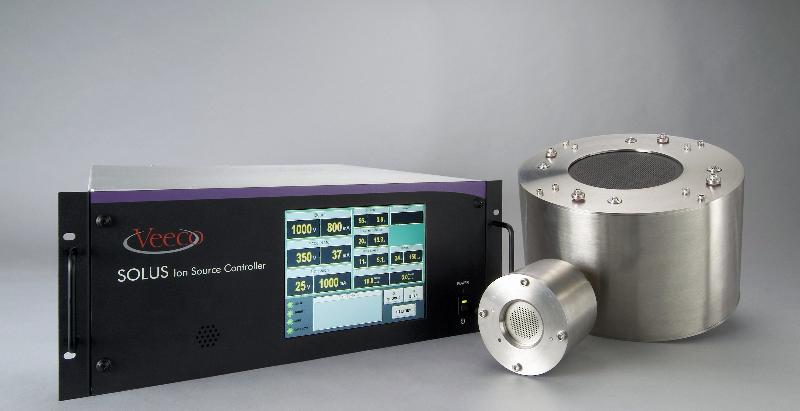
Veeco's
new SOLUS™ DC Ion Source Controller features a state-of-the-art precision control system
design providing reliable and stable power for ion source operation in all
types of processes. Integrated
power modules and gas flow control with ratio capabilities allow for optimal
ion source control and performance in the most demanding process environments. To Learn More Visit: www.veeco.com/SOLUS 970-221-1807
| 
Mustang Vacuum Systems is
pleased to announce completion of our relocation to a new purpose built
facility in close proximity to our previous location. This expansion significantly increases our manufacturing and
laboratory space, ensuring we meet the growing demand for both our Industrial
and Solar deposition solutions.
Visit Us
Email: inquiries@mustangvac.com
|
|

Solid Sealing Technology specializes in the design and manufacture of highly engineered hermetic products using metalizing, brazing, glass-ceramic sealing, welding, and critical assembly. SST manufactures industry standard and custom designed Vacuum Feedthroughs, Coaxial Connectors, Multi-Pin Connectors, Thermocouples, and Isolators for high temperature, UHV, and high pressure applications.
Contact:
Ph: 518-874-3600
Fax: 518-874-3610
info@solidsealing.com
| 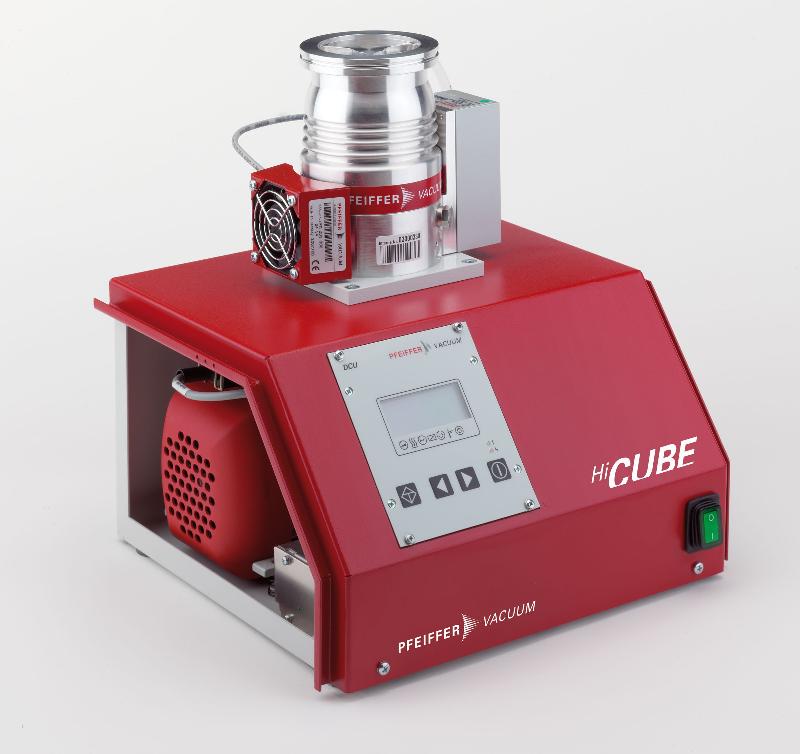
Dry Turbo Pumping Station
for $4,995
The $4995 Pfeiffer Vacuum
HiCube™ Eco is a complete dry vacuum pump station. The plug and play vacuum
system includes turbo and dry diaphragm pumps. It delivers a pumping speed of 67 l/s and an ultimate
pressure of
<10-8 mbar.
Visa or MasterCard are accepted.
Learn more.
|
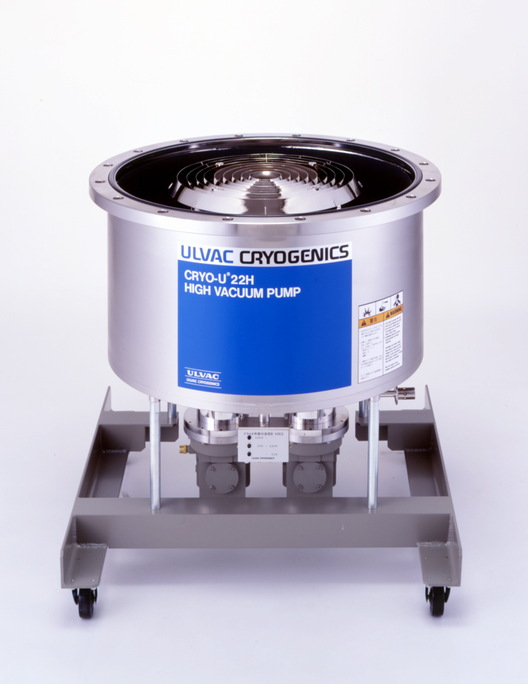 Large
Cryo Pumps Large
Cryo Pumps
Specializing
in high reliability and high refrigeration power, ULVAC Cryogenic Pumps deliver
maximum pumping speed and capacity. ULVAC offers the premier high-powered
solution to your demanding cryogenic pumping application. ULVAC has developed
specialty cryo pumps; UHV, low-vibration, "flat-type",
corrosion-proof, and a high-speed water vapor pump version.
Learn More
Contact 1-978-686-7550 sales@us.ulvac.com |
Comdel
Delivers Highest Frequency and Power to Major Korean Solar Company Comdel
recently supplied a major innovative Korean company in the solar industry with
Comdel's CXH 50K, 40MHz generator.
The CXH is one of the highest frequency and power generators made for
solar application. The generator
will be used in the production of glass type solar cells. Learn more.
Comdel
11 Kondelin
Road
Gloucester, MA
01930
Tel: 978-282-0620 or
800-468-3144
Fax: 978-282-4980 www.comdel.com info@comdel.com
|
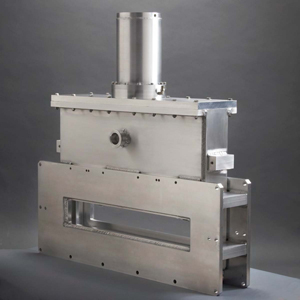
Vacuum Research, Inc.
Rectangular
Port Gate
and Throttle Valves Aluminum,
Steel or Stainless Steel Valves with flange or bolt pattern to match your
system. Select motorized actuator
for soft open and close or full throttle modulation. Total leak rate less than 10-10 scc/sec. RoHS compliant and CE marked. Phone:
800-426-9340 Web: www.vacuumresearch.com Email:
vrc@vacuumresearch.com
|
Make your life easier with
Evatec's advanced "Thin Film
Toolbox" Seamless
integration of film design software, a proprietary strategy generator for layer
termination, process recipe generation,download of process and finally coating itself enable manufacture of the
highest quality optical coatings time after time.
For information contact your local office.
Phone: +1 603
669-9656 . www.evatecnet.com
Mail: infoNA@evatecnet.com |
800.245.1656 salesus@lesker.com www.lesker.com
Global manufacturer &
distributor of vacuum products. With our three divisions-The Vacuum Mart™,
Process Equipment Division, & Materials Division-we are your One Supplier
for a Complete Vacuum Solution. Offering quality products and quick delivery
from our worldwide warehouses. Exclusive distributor for Solvay Solexis'
Fomblin® and Galden® products for vacuum pumps & heat
transfer applications.
|

Speed
pump-down and vacuum performance with RediVac™ Vented Screws and Vacuum Baked
O-Rings from
UC
Components Inc. www.uccomponents.com | 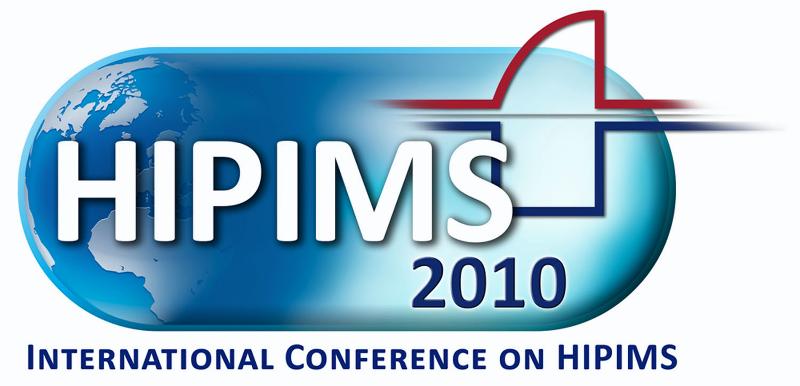
International Conference on HIPIMS
Sheffield Hallam University
Sheffield, United Kingdom
July 5-7, 2010
Featuring Two SVC Tutorial Courses
Click the links for course description, topical outline and detailed syllabus
Thin Film Growth and Microstructure Evolution
(Joseph Greene)
Sputter Deposition in Manufacturing
(David Glocker)
Click here for More Details
|
Thank you to our
2010 TechCon Sponsors!
|
|
|
|
|
With the 2010 TechCon in Orlando, Florida in the books, SVC continues to forge ahead to provide its readership with the latest in our technology's news and latest developments - and also shed a little light on the world of science in general. As the Society learned first-hand, our world can be an unpredictable and fascinating laboratory - affecting our lives and well-laid plans in unexpected ways. However, it's the individual efforts of many curious and industrious people that keep our technology relevant, our industry stable, and our Society strong. Read on to learn more about these people, their science, and how applications of vacuum technology affect our lives.
|
Big Energy Storage in Thin Films: New ultracapacitor material could be fabricated directly on chips and solar cells
By Katherine Bourzac, Technology Review, April 22, 2010
Energy
storage devices called ultracapacitors can be recharged many more times than
batteries, but the total amount of energy they can store is limited. This means
that the devices are useful for providing intense bursts of power to supplement
batteries but less so for applications that require steady power over a long
period, such as running a laptop or an engine.
Now
researchers at Drexel University in Philadelphia have 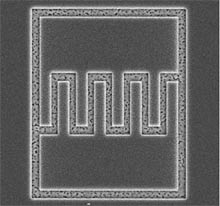 demonstrated that it's
possible to use techniques borrowed from the chip-making industry to make
thin-film carbon ultracapacitors that store three times as much energy by
volume as conventional ultracapacitor materials. While that is not as much as
batteries, the thin-film ultracapacitors could operate without ever being
replaced. demonstrated that it's
possible to use techniques borrowed from the chip-making industry to make
thin-film carbon ultracapacitors that store three times as much energy by
volume as conventional ultracapacitor materials. While that is not as much as
batteries, the thin-film ultracapacitors could operate without ever being
replaced.
These
charge-storage films could be fabricated directly onto RFID chips and the chips
used in digital watches, where they would take up less space than a
conventional battery. They could also be fabricated on the backside of solar
cells in both portable devices and rooftop installations, to store power
generated during the day for use after sundown. The materials have been
licensed by Pennsylvania startup Y-Carbon.
(Click the image to
read the full article on www.technologyreview.com)
Image: Min Heon
|
CIGS Record of 20.1% Efficiency Reported by Researchers at ZSW
By Mark Osborne, PV-tech.org Daily News, April 29, 2010
The
U.S. research institute NREL held the conversion efficiency record for copper,
indium, gallium, and selenium (CIGS) solar cells for 16 years but has lost this
accolade to scientists at the Zentrum für Sonnenenergie- und
Wasserstoff-Forschung Baden-Württemberg, Germany (Centre for Solar Energy and
Hydrogen  Research, ZSW). ZSW, based in Stuttgart, has demonstrated CIGS cell
efficiency of 20.1% on a 0.5-square-centimetre cell. The Fraunhofer ISE in
Freiburg, Germany has confirmed the new results. Research, ZSW). ZSW, based in Stuttgart, has demonstrated CIGS cell
efficiency of 20.1% on a 0.5-square-centimetre cell. The Fraunhofer ISE in
Freiburg, Germany has confirmed the new results.
"This record is for thin-film technology in general and not just CIGS
solar cells," noted Dr. Michael Powalla, member of the board and head of
the photovoltaics division at ZSW. "It is the result of continuous
systematic research which has been supported for years by the Federal Ministry
of the Environment, Nature Conservation and Nuclear Safety, the
Baden-Württemberg Ministry of Economics and the European Community. A major
factor in achieving this top position was the close cooperation between basic
research at the university, applied research at the ZSW, and production
development at our industrial partner Würth Solar."
(Click the image to
read the full article on www.pv-tech.org)
Image: www.pv-tech.org
|
|
Energy Efficient Separations: Researchers Use Computational Modeling to Design Improved Membrane Technology
Georgia Tech Research News, Feb 15, 2010
Computational
modeling tools developed at the Georgia Institute of Technology could
accelerate development of a new type of 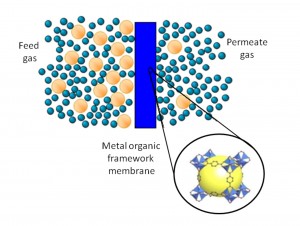 membrane technology that will boost the
efficiency of energy-related gas separations.
The tools will help researchers identify the best candidate materials
for use in new metal-organic framework (MOF) membranes now under development. membrane technology that will boost the
efficiency of energy-related gas separations.
The tools will help researchers identify the best candidate materials
for use in new metal-organic framework (MOF) membranes now under development.
MOF
membranes offer an alternative to more energy intensive processes for
separating gases such as carbon dioxide, methane, nitrogen and hydrogen. The technology has generated significant
interest because of the broad range of crystalline structures that can be synthesized,
but development of new MOF membranes is still at an early stage.
"Metal-organic
framework membranes will be useful for doing large-scale energy-related
separations in an efficient way. We are
trying to accelerate their development to help move the world's energy economy
toward a more sustainable path," said David Sholl, a professor in the Georgia
Tech School of Chemical and Biomolecular Engineering. "A lot of chemists are interested in
developing these metal-organic frameworks, and we hope to provide a new
approach to designing the membranes."
(click the image for the full article on www.gtresearchnews.gatech.edu) Image: Seda Keskin
|
Physicists Find Way to See Through Paint, Paper, and Other Opaque Materials
Science Daily, March 9, 2010
Materials
such as paper, paint, and biological tissue are opaque because the light that
passes through them is scattered in complicated and seemingly random ways. A
new experiment conducted by researchers at the City of Paris Industrial Physics
and Chemistry Higher Educational Institution (ESPCI) has shown that it's
possible to focus light through opaque materials and detect objects hidden
behind them, provided you know enough about the material.
The
experiment is reported in the current issue of Physical Review Letters, and is
the subject of Viewpoint in APS Physics
by Elbert van Putten and Allard Mosk of the University of Twente.
In
order to demonstrate their approach to characterize opaque substances, the researchers
first passed light through a layer of zinc oxide, which is a common component
of white paints. By studying the way the light beam changed as it encountered the material, they were able to
produce a numerical model called a transmission matrix, which included over
65,000 numbers describing the way that the zinc oxide layer affected light.
They could then use the matrix to tailor a beam of light specifically to pass
through the layer and focus on the other side. Alternatively, they could
measure light emerging from the opaque material, and use the matrix to assemble
of an image of an object behind it.
(click here to read the full article on www.sciencedaily.com)
|
New Path to Solar Energy via Solid-State Photovoltaics
From Article Ant - March 30, 2010
A
newly discovered path for the conversion of sunlight to electricity could
brighten the future for photovoltaic technology. Researchers with Lawrence
Berkeley National Laboratory (Berkeley Lab) have found a new mechanism by which
the photovoltaic effect can take place in semiconductor thin-films. This new
route to energy production overcomes the bandgap voltage limitation that
continues to plague conventional solid-state solar cells.
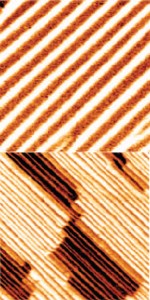 These
piezoresponse force microscopy images of bismuth ferrite thin films show
ordered arrays of 71 degree domain walls (top) and 109 degree doman walls
(bottom). By changing the polarization direction of the bismuth ferrite, these
domain walls give rise to the photovoltaic effect. (Image from Seidel, et. al.) These
piezoresponse force microscopy images of bismuth ferrite thin films show
ordered arrays of 71 degree domain walls (top) and 109 degree doman walls
(bottom). By changing the polarization direction of the bismuth ferrite, these
domain walls give rise to the photovoltaic effect. (Image from Seidel, et. al.)
These
nanoscale images of bismuth ferrite thin films show ordered arrays of 71 degree
domain walls (top) and 109 degree doman walls (bottom). By changing the
polarization direction of the bismuth ferrite, these domain walls give rise to
the photovoltaic effect.
Working
with bismuth ferrite, a ceramic made from bismuth, iron and oxygen that is
multiferroic - meaning it simultaneously displays both ferroelectric and ferromagnetic properties - the researchers
discovered that the photovoltaic effect can spontaneously arise at the
nanoscale as a result of the ceramic's rhombohedrally distorted crystal
structure. Furthermore, they demonstrated that the application of an electric
field makes it possible to manipulate this crystal structure and thereby
control photovoltaic properties.
(click the image to read the full article on www.articleant.com)
|
New Alloys Key to Efficient Solar Energy and Lighting
Green Design and Manufacturing, March 22,2010
A
recent advance by Arizona State University researchers in developing nanowires
could lead to more efficient photovoltaic cells as well as better LEDs. ASU
electrical engineers are working to improve quaternary alloy semiconductor
nanowire materials.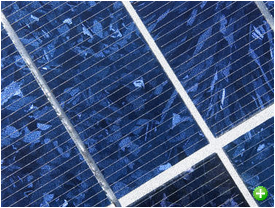
Nanowires
are tens of nanometers in diameter and tens of microns in length. Quaternary
alloys are made of semiconductors with four elements, often made by alloying
two or more compound semiconductors. Semiconductors are the material basis for
technologies such as solar cells, high-efficiency LEDs for lighting, and for
visible and infrared detectors.
One
of the most critical parameters of semiconductors that determine the
feasibility for these technologies is the band gap. The band gap of a
semiconductor determines, for example, if a given wavelength of sun light is
absorbed or left unchanged by the semiconductor in a solar cell. Band gap also determines
what color of light an LED emits. To make solar cells more efficient, it's
necessary to increase the range of band gaps.
(click the image to read the full article on www.greendesignbreifs.com)
Image: Green Design and Manufacturing
|
|
ToxRefDB: The Toxic Materials Database is Released to the Public
The U.S. Environmental
Protection Agency (EPA) has made it  easier to find chemical information online.
EPA has released a database, called ToxRefDB,
which allows scientists and the interested public to search and download
thousands of toxicity testing results on hundreds of chemicals. ToxRefDB
captures 30 years and $2 billion of testing results. More information is
available at http://actor.epa.gov/toxrefdb/faces/Home.jsp easier to find chemical information online.
EPA has released a database, called ToxRefDB,
which allows scientists and the interested public to search and download
thousands of toxicity testing results on hundreds of chemicals. ToxRefDB
captures 30 years and $2 billion of testing results. More information is
available at http://actor.epa.gov/toxrefdb/faces/Home.jsp
Image: U.S. EPA |
Layered Graphene Sheets Could be Used for Hydrogen Storage
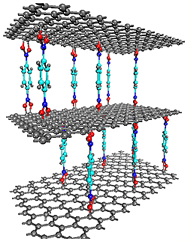 Graphene
is a form of carbon made into sheets a single atom thick-now appears to be a base
material for capturing hydrogen. This
research was performed in a
joint project with National Institute of Standards and Technology (NIST),
Center for Neutron Research and the University of Pennsylvania. The findings
suggest stacks of graphene oxide frame work GOF's layers could potentially
store hydrogen safely for use in fuel cells and other applications. Graphene
is a form of carbon made into sheets a single atom thick-now appears to be a base
material for capturing hydrogen. This
research was performed in a
joint project with National Institute of Standards and Technology (NIST),
Center for Neutron Research and the University of Pennsylvania. The findings
suggest stacks of graphene oxide frame work GOF's layers could potentially
store hydrogen safely for use in fuel cells and other applications.
Further
information is at http://www.nist.gov/ncnr/graphene_031610.cfm
Image: NIST |
Thin-Film Sensor System Optimizes Forming Processes
April 19, 2010
In many industrial forming processes fluctuations in
the process parameters lead to badly formed parts, tears or wrinkles. In order
to improve cost-effectiveness in, for example, deep drawing and hydroforming,
scientists at the Fraunhofer Institute for Surface Engineering and Thin Films
IST and the Fraunhofer Institute for  Machine Tools and Forming Technology IWU
have, in collaboration with a consortium from industry, optimized the
regulation of forming processes by means of tools equipped with an integrated
thin-film sensor system. This is part of the ORUM project of the Federal
Ministry of Education and Research. During the forming process the universal
sensor modules supply the process data required for dynamic on-line process
control. An electronic unit evaluates the sensor signals and transmits them to
the appropriate press controller. Machine Tools and Forming Technology IWU
have, in collaboration with a consortium from industry, optimized the
regulation of forming processes by means of tools equipped with an integrated
thin-film sensor system. This is part of the ORUM project of the Federal
Ministry of Education and Research. During the forming process the universal
sensor modules supply the process data required for dynamic on-line process
control. An electronic unit evaluates the sensor signals and transmits them to
the appropriate press controller.
Making
high-quality products cost-effectively by deep drawing calls for a process
which is error-free and of reproducible design. This is not possible without
information relevant to the process being available in real time. This
information coupled with the appropriate automatic control procedures makes
dynamic process control possible. Currently this requirement is only
inadequately met. As a rule information about the position and current shape of
the workpieces is either not available at all during the forming process or can
only be obtained with sufficient accuracy by expending a great deal of
technical effort. The thin-film modules developed as part of the ORUM project
are used for the direct dimensional monitoring of forming progress since the
coating systems are in immediate contact with the workpiece which is to be
formed.
The multifunctional thin-film sensor system has
outstanding piezoresistive and tribological properties. This means that for the
first time measurements can be taken in direct frictional contact with the
workpiece. During the deep drawing process, the sheet metal moves gradually out
of the contact areas of the individual sensor structures. The moment contact
with a sensor structure is lost, a minimum level of sensor resistance is
detected and this is registered by the measurement system.
(Click here to learn more at www.ist.fraunhofer.de)
|
Major Shift for NASA Space Program Away from Manned Space Exploration
The
U.S. Space Program over many years has raced to send humans into space. Now
with a major policy shift in Washington the President's 2011 NASA budget has
terminated human space  exploration and has replaced it with a technology
development program. This would be a radical change including commercial
partners building new spacecraft. The Constellation space vehicle program will
be cancelled. It is assumed that commercial companies will develop the future
space vehicles. For example, SpaceX, Los Angeles, CA, is a commercial company developing the Falcon
rocket which could someday be used to shuttle astronauts. More money will be
available for commercial partners. Needless to say, there is considerable
resistance to the new budget from U.S. Congress. Further details are in Charles
Bolden, Jr. , NASA Administrator,
remarks to Congress: http://www.nasa.gov/pdf/420994main_2011_Budget_Administrator_Remarks.pdf exploration and has replaced it with a technology
development program. This would be a radical change including commercial
partners building new spacecraft. The Constellation space vehicle program will
be cancelled. It is assumed that commercial companies will develop the future
space vehicles. For example, SpaceX, Los Angeles, CA, is a commercial company developing the Falcon
rocket which could someday be used to shuttle astronauts. More money will be
available for commercial partners. Needless to say, there is considerable
resistance to the new budget from U.S. Congress. Further details are in Charles
Bolden, Jr. , NASA Administrator,
remarks to Congress: http://www.nasa.gov/pdf/420994main_2011_Budget_Administrator_Remarks.pdf
2011
Budget details can be seen at NASA's web site: http://www.nasa.gov/news/budget/index.html
Information
about SpaceX can be seen at: http://www.spacex.com/company.php
Image: SpaceX |
First Solar Become the First Solar Company to Produce 1GW of Thin Film Modules in One Year
First Solar
Inc.(Tempe, AZ), announced it has manufactured 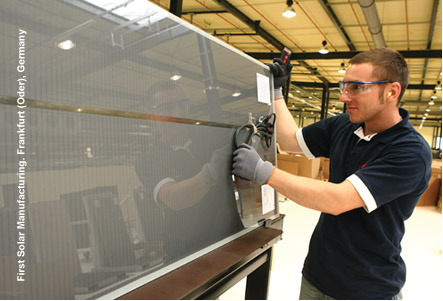 and shipped more than 1
gigawatt (GW) of its CdTe thin film photovoltaic (PV) solar modules in 2009,
becoming the first PV company to attain this production level in a single
year. One GW of solar modules produces enough electricity to serve the needs
of approximately 145,000 average American homes and saves roughly 1 million
metric tons of carbon dioxide emissions annually. First Solar increased its
manufacturing capacity from approximately 75 megawatts (MW) per year at the
beginning of 2007 to more than 1GW today. and shipped more than 1
gigawatt (GW) of its CdTe thin film photovoltaic (PV) solar modules in 2009,
becoming the first PV company to attain this production level in a single
year. One GW of solar modules produces enough electricity to serve the needs
of approximately 145,000 average American homes and saves roughly 1 million
metric tons of carbon dioxide emissions annually. First Solar increased its
manufacturing capacity from approximately 75 megawatts (MW) per year at the
beginning of 2007 to more than 1GW today. Click here for more details Image: First Solar
|
|
DOE's Advanced Research Projects Agency-Energy (ARPA-E) Has its First National Conference
The
new part of DOE, Advanced Research Projects Agency-Energy (ARPA-E) held its
first national conference called the "Energy Innovation Summit" on energy
research. The meeting attracted about 1,700 people with 59% from industry, 21% form universities
and 17% from government. Director Arun
Majumdar detailed APRA-E's funding history. The first round of funding
in June 2009 was $150 million for innovative energy projects. Out of 3,700 concept
papers only 37 finalists were selected. The second round of funding in December
2009 was $100 million for liquid fuels, batteries and electric vehicles. The third
$100 million round in April 2010 focuses on grid scale electric al storage, advanced
power converters and energy efficient cooling projects.
(For details click here to visit www.arpa-e.energy.gov)
|
Gold Nanoparticles Amplify the Detection Signal of Raman Spectroscopy
 Researchers
have shown that a Raman signal can be enhanced by using 55 nm gold particles
coated with 2 nm silica or alumina film. A new enhancement technique was
developed by Zhong Qun Tian, Xiamen University and Zhong Lin Wang of Georgia
Institute of Technology. The technique is called Shell-Isolated
Nanoparticles-Enhanced Raman Spectroscopy or SHINERS. The technique enhances
the signal with each particle behaving like an independent probe. Such technology could lead to hand-helddevices which could be used for rapid
chemical detection. The results are published in Nature (Letters) 464,
pp392-395, 18 March, 2010. Researchers
have shown that a Raman signal can be enhanced by using 55 nm gold particles
coated with 2 nm silica or alumina film. A new enhancement technique was
developed by Zhong Qun Tian, Xiamen University and Zhong Lin Wang of Georgia
Institute of Technology. The technique is called Shell-Isolated
Nanoparticles-Enhanced Raman Spectroscopy or SHINERS. The technique enhances
the signal with each particle behaving like an independent probe. Such technology could lead to hand-helddevices which could be used for rapid
chemical detection. The results are published in Nature (Letters) 464,
pp392-395, 18 March, 2010.
Further
information is at : http://www.nanoscience.gatech.edu/zlwang/paper/2010/10_Nature_01.pdf
And
the Z. L. Wang's Research Group at : http://www.nanoscience.gatech.edu/zlwang/
Image: Macmillan Publishers Ltd. 2010
|
Photovoltaic Cells on the Verge of Explosive Growth
By Tesuo Nozawa, Tech-On Newsletter, April 1, 2010
The
day is coming fast when photovoltaic cells will finally leave the
"incubator," spreading like wildfire. The spread of renewable energy
purchasing systems and massive financial incentives have set the stage for
solar cells in not only homes and condos, but in offices, factories and more as
well.
"We
will realize grid parity in photovoltaic cells as soon as we possibly
can," says Toshishige Hamano, Representative Directors and Executive Vice
Presidents of Sharp Corp. of Japan.
For
companies and personnel involved in the new energy business, such as solar
cells, "grid parity" has become top priority.
The
term refers to bring the electricity cost from renewable energy sources (solar
cells, wind power and the like) down to the level that electricity prices will
be equivalent to the existing commercial power grid.
If
grid parity is achieved with solar cells, for example, it would mean an
increasing number of individuals and organizations would install photovoltaic
power generating systems even without financial incentives. This would in turn
lower the purchase and installation costs for solar cells even more, creating a
positive feedback loop... and that could abruptly accelerate the speed of
adoption for solar cells in the market. Solar cells are on the verge of leaving
the incubator, and spreading like wildfire to everywhere the sun shines.
(Click here to read the full article on www.techon.nikkeibp.co.jp)
|
Interested in Sharing the Latest News in Vacuum Coating Technology?

Interested in sharing the latest
news in vacuum coating technology? Forward us a link to an article you
want to share with the rest of the SVC readership to publications@svc.org. Purchase advertising space on this
newsletter by contacting SVC at svcinfo@svc.org.
|
|
Society of Vacuum Coaters 71 Pinon Hill Place, NE
Albuquerque, NM 87122
(505) 856-7188 Fax (505) 856-6716
www.svc.org E-mail: svcinfo@svc.org
|
|
|